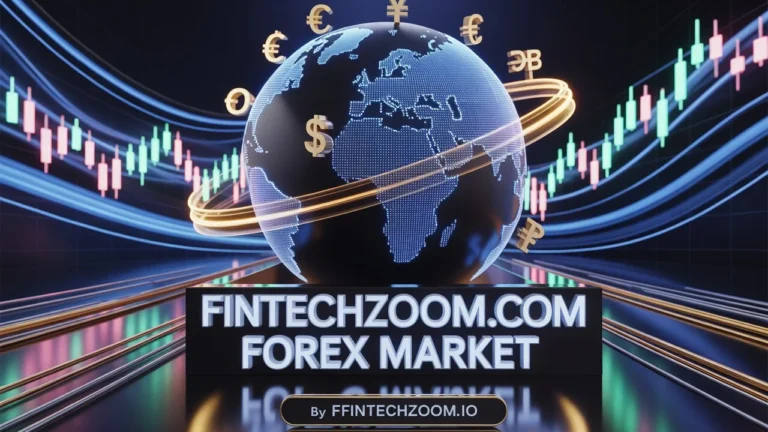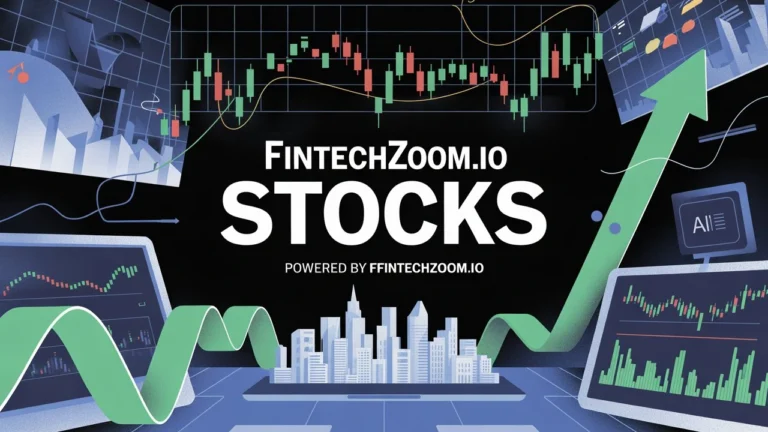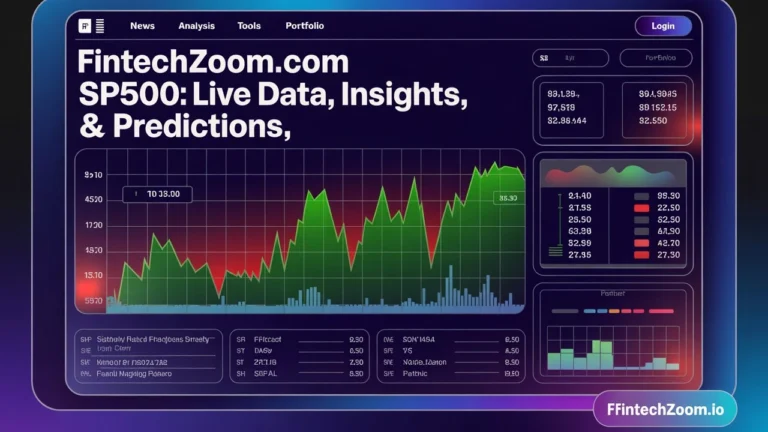Fintechzoom.com Brent – Live Prices, And Market Analysis
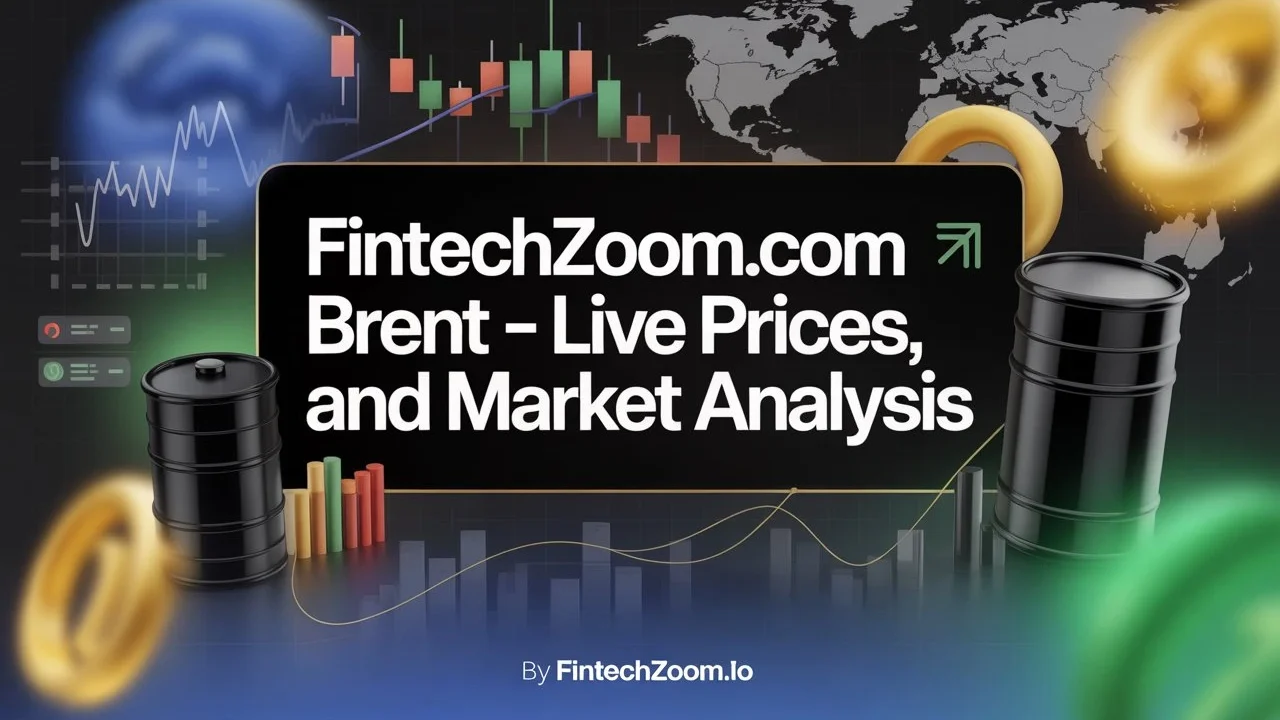
Brent’s crude oil is one of the most critical energy indicators globally. It comes mainly from the North Sea oil fields and is widely used as a price guide for two-thirds of the world’s oil trade. Unlike the US standard West Texas Intermediate (WTI), Brent crude reflects more international demand and supply dynamics.
The movement of total oil prices is significant. Oil affects everything, including transportation, heating, production, electricity chains, and even the cost of living. As Brent prices rise, inflation also tends to increase frequently. When prices drop, the global market responds similarly, with some sectors benefiting and others incurring losses.
This is where Finchzoom.com, including Brent, is involved. The platform offers updates, diagrams, analytical tools, and forecasts for merchants, investors, and casual players alike. When used, people have a clearer understanding of where the market is headed and how they can plan accordingly.
Live Brent Crude Updates on Fintechzoom.com Brent
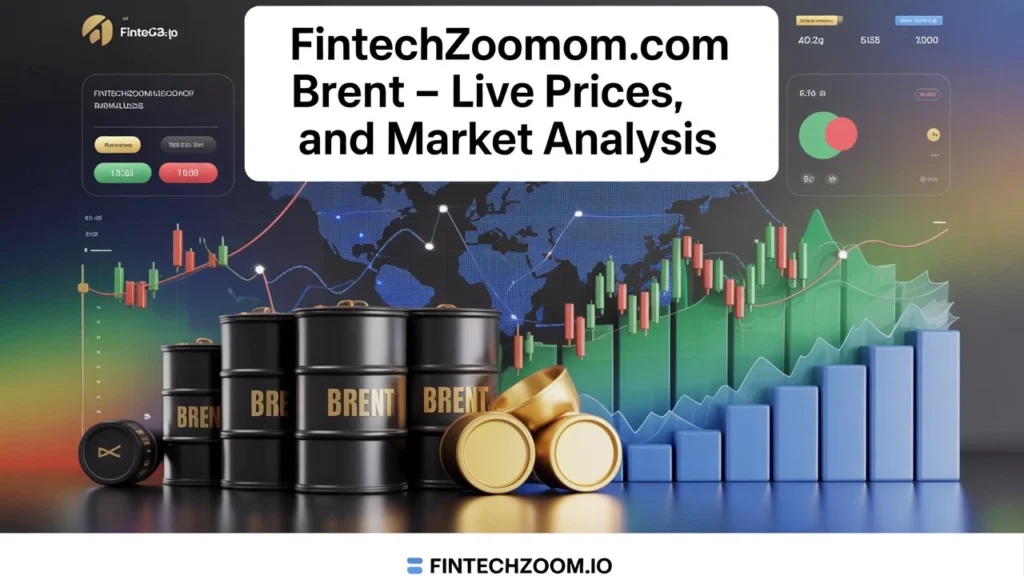
Open Finchzoom.com, Brent, and you will see the actual updates. This chart displays current prices and historical data for Brent cheese, presented in barrels. This is important because the oil moves quickly. Prices can change in minutes due to sudden OPEC announcements, competition in oil-rich regions, or fluctuations in global demand.
How to Read Real-Time Charts and Price Data
- The live chart shows the current trading price of Brent crude.
- You can switch between different timeframes, including daily, weekly, monthly, and yearly.
- Technical indicators, such as moving averages or the Relative Strength Index (RSI), help identify trends.
- Candlestick patterns indicate whether buyers or sellers are in control of the market.
For beginners, graphs can seem complicated at first. But even a simple look is proper. If prices are constantly increasing, demand will be high or supply will be delayed. If the line drops, there may be excessive or low demand.
Comparing Brent vs WTI
- Geography: Brent comes from the North Sea, WTI comes from U.S. oil fields.
- Quality: Brent is slightly heavier and has more sulfur than WTI.
- Market use: Brent is used as a benchmark for European, African, and Asian oil markets, while WTI is more tied to U.S. markets.
- Pricing: Transport and refining differences often result in Brent trading at a premium compared to WTI.
Understanding these differences helps investors diversify and comprehend how regional events impact global energy costs.
Factors Driving Brent Crude Prices
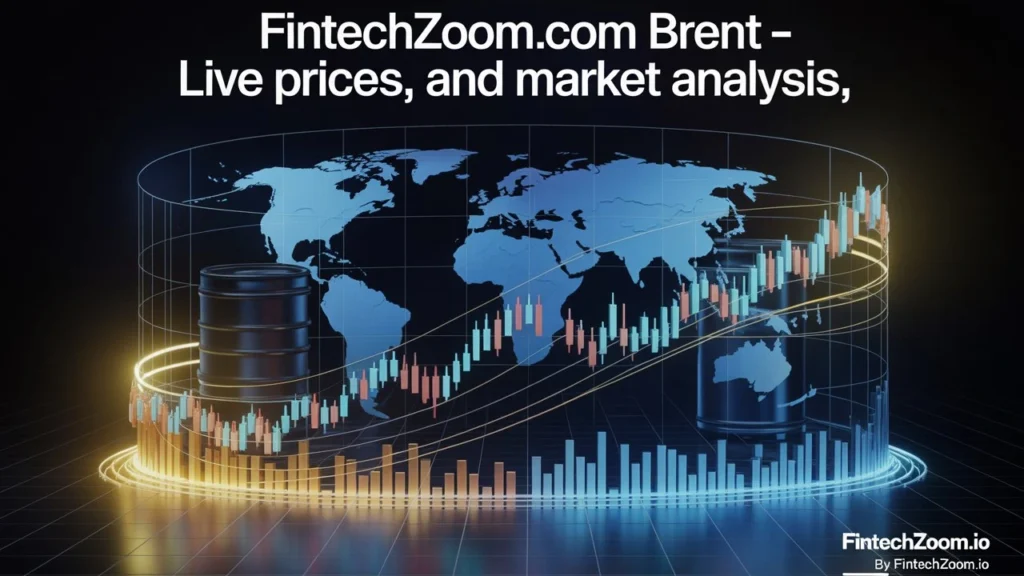
Brent crude prices don’t move randomly. A mix of global, regional, and financial forces shapes them.
Global Supply and OPEC+ Decisions
The Organization of the Petroleum Exporting Countries (OPEC), known as OPEC+, and its allies play a central role. Reducing production often results in higher prices. Increased production could lower prices. Supply levels of other major manufacturers, such as those in the US, Russia, and Brazil, are also highly influential in the market.
Geopolitical Tensions and Market Reactions
Oils are often referred to as “geopolitical products.” Wars, sanctions, and riots in oil-producing regions can drive up prices. For example, if delivery routes, such as those for grocery lines, are at risk, the global oil supply is immediately impacted.
Demand Trends in Emerging Economies
Countries such as India, China, and other growth economies contribute to the high demand for energy. As industry growth slows, oil demand weakens. If they develop quickly, they consume more oil and increase prices.
Inflation and Financial Movements
It’s priced in US dollars. If the dollar is weakened, oil will be cheaper in countries using other currencies, and demand will increase. As inflation rates rise worldwide, governments and businesses correct the costs that can increase or reduce energy consumption.
Fintechzoom.com Brent Analysis Tools and Insights for Investors
Fintechzoom.com Brent doesn’t just show live prices—it also provides tools that help investors make sense of the data.
Technical Indicators and Forecast Models
Charts are full of signals. Investors can apply tools like:
- Moving Averages – Show whether a trend is bullish or bearish.
- Relative Strength Index (RSI) – Reveals if Brent is overbought or oversold.
- MACD (Moving Average Convergence Divergence) – Helps predict price direction.
Forecast models also combine historical patterns with current events. For example, they may suggest how a policy change in OPEC could affect Brent prices next month.
Risk Management and Hedging Strategies
Oil is volatile. Prices can fluctuate by 5–10% in a short period. Fintechzoom highlights strategies like:
- Hedging with futures contracts – Locking in prices for future delivery.
- Diversification – Balancing oil exposure with stocks, gold, or renewable energy assets.
- Stop-loss strategies – Setting limits to reduce trading losses.
ESG and Sustainable Energy Considerations
Energy investing is not only about profits. Investors now think about Environmental, Social, and Governance (ESG) impacts. Fintechzoom’s Brent analysis also covers how carbon regulations, renewable energy adoption, and climate agreements affect oil’s long-term future.
Recent Market Trends in Brent Crude
The past few years have shown how quickly Brent crude can move. From the pandemic lows to the recovery-driven highs, oil has gone through cycles of volatility. Fintechzoom.com Brent has tracked these changes closely, helping readers understand what drives each shift.
Historical Volatility and Price Shocks
- In 2020, Brent crude briefly collapsed due to global lockdowns. Demand almost vanished.
- In 2021–2022, prices rebounded as economies reopened and energy demand surged.
- In 2023–2024, geopolitical conflicts and OPEC production adjustments contributed to significant price fluctuations.
- Entering 2025, Brent is shaped by both traditional supply-demand forces and the growing role of clean energy transitions.
These swings show why constant monitoring is essential. An investor or business that misses one global event can see significant impacts on costs and portfolios.
Short-Term Outlook for Traders
Traders focus on daily or weekly movements. Current patterns show that Brent crude often reacts sharply to:
- OPEC meeting announcements.
- U.S. inventory data releases.
- Economic growth signals from China and Europe.
- Currency shifts, particularly in the strength or weakness of the USD.
Short-term volatility is both a risk and an opportunity. For day traders, Fintechzoom’s charts and signals help capture quick profits while controlling exposure.
Long-Term Future of Brent in a Renewable Energy World
The world is evolving towards cleaner energy, with investments in solar, wind, and hydrogen on the rise. However, the oil does not go away overnight. In fact, many forecasts indicate that global oil demand will remain strong in the 2030s, particularly in developing regions.
Fintechzoom.com Brent often highlights this dual reality:
- In the short to medium term, Brent will remain relevant as long as industries and transportation continue to rely on oil.
- In the long term, growth in renewables and stricter environmental policies may slow demand for Brent.
For investors, this means striking a balance between oil opportunities and exposure to renewable energy.
Use Fintechzoom.com Brent for Smarter Investment
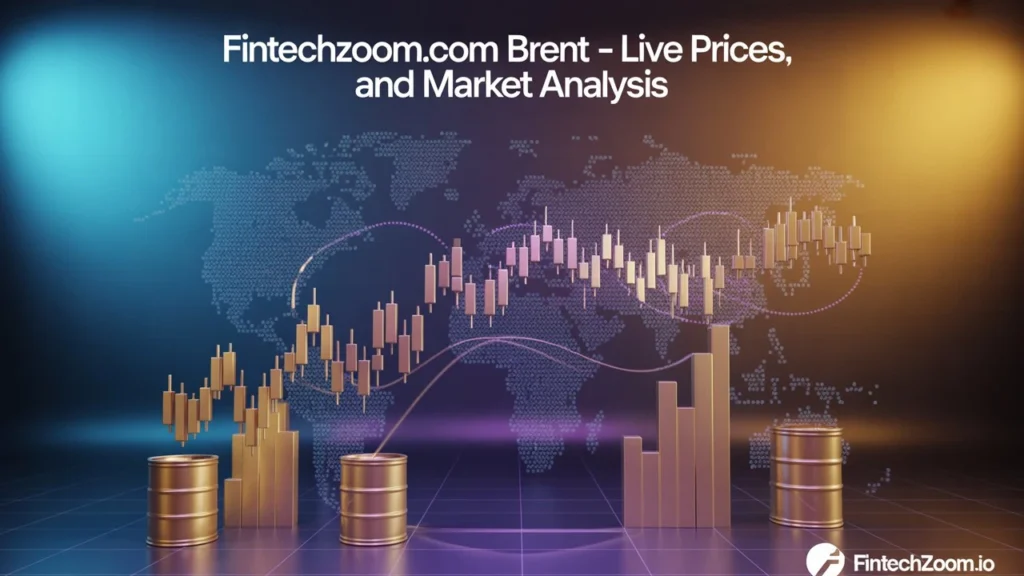
Having live charts is helpful, but the real value lies in knowing how to utilize them effectively. Fintechzoom.com Brent is more than a data feed—it’s a decision-making tool.
Step-by-Step Guide to Navigating the Platform
- Check Live Prices – Begin with the real-time chart to understand current momentum.
- Analyze Indicators – Add RSI, MACD, and moving averages to see technical signals.
- Read Market Updates – Stay aware of news that could impact supply or demand.
- Compare Benchmarks – Examine both Brent and WTI to observe global versus U.S. price trends.
- Plan Entry and Exit Points – Use chart signals to decide when to buy, hold, or sell.
Strategies for Day Traders vs Long-Term Investors
- Day Traders: Focus on intraday price swings, use stop-loss orders, and react to quick market triggers.
- Swing Traders: Hold positions for days or weeks, relying on technical analysis.
- Long-Term Investors: Base decisions on global energy outlook, OPEC policy, and economic cycles.
By following this approach, each type of market participant can utilize Fintechzoom.com Brent in a manner that aligns with their goals.
Forecast and Future Outlook
Predicting oil prices is never exact, but trends and models offer guidance.
Price Predictions for the Coming Months
- Short-term (2025 Q3–Q4): Brent crude oil prices are expected to range between $75 and $90 per barrel, depending on OPEC output and global demand recovery.
- Medium-Term (2026): Prices could stabilize if renewable adoption grows, but geopolitical risks may keep volatility high.
- Long-Term (2030s): Brent’s role as a key benchmark will remain, but oil may compete more directly with cleaner energy alternatives.
Key Events to Watch in the Oil Market
- OPEC+ production quotas and surprise adjustments.
- U.S. shale oil production trends.
- Geopolitical risks in the Middle East, Africa, and Eastern Europe.
- Global economic growth indicators, especially in Asia.
- Climate agreements and carbon regulations affecting fossil fuel demand.
Investors who track these triggers on Fintechzoom.com can position themselves ahead of major moves.
Conclusion
Free oil blending affects everything from fuel to pumps to food on the table. This is a global standard that reflects proper economic health and risk. Fintechzoom.com Brent offers readers a universal platform to follow prices, analyze trends, and plan strategies.
Whether you’re a quick opportunity merchant or a long-term investor who wants stability, this platform provides the tools, data, and understanding you need. Get reliable and easy-to-read analyses in a rapidly changing world of energy markets based on geopolitics, technology, and climate policy. This is precisely what Fintechzoom.com offers, Brent
FAQs
What is Finchzoom.com, Brent?
It is a platform that provides insights into the lifestyles of crude oil, market diagrams, and in-depth analysis for investors and readers.
Why is raw crude oil important?
This serves as a global standard for oil prices, affecting inflation, transportation, and industrial costs worldwide.
How does Brent Oil differ from WTI?
North Sea Brent is used internationally, while WTI originates primarily from the US and its internal oil fields.
Can I discuss Brent Oil directly from Fintechzoom.com, Brent?
No, the site provides data and understanding, but trades are executed through an exchange with a broker.
How often does the price of crude oil change?
Under the influence of demand, supply, and global news, market prices are constantly evolving.
Which tools can I use on Finchzoom.com, Brent?
Live times, technical indicators, price comparisons, and expert comments.
Is Brent Oil a good investment in 2025?
It depends on your goals. Traiders see volatility potential, but long-term investors balance oil with other assets.
What risks are linked to Brent’s oil investment?
The primary risks include geopolitical conflicts, OPEC’s actions, inflation, and fluctuations in the renewable energy sector.
How do I read the Brent Oil Circuit?
Examine the Candlestick model, smooth averages, and RSI signals to identify market trends.
What is the outlook for Brent’s raw oil over the next 10 years?
Brent remains essential, but the introduction of renewable energy and environmental policies could change demand models.


